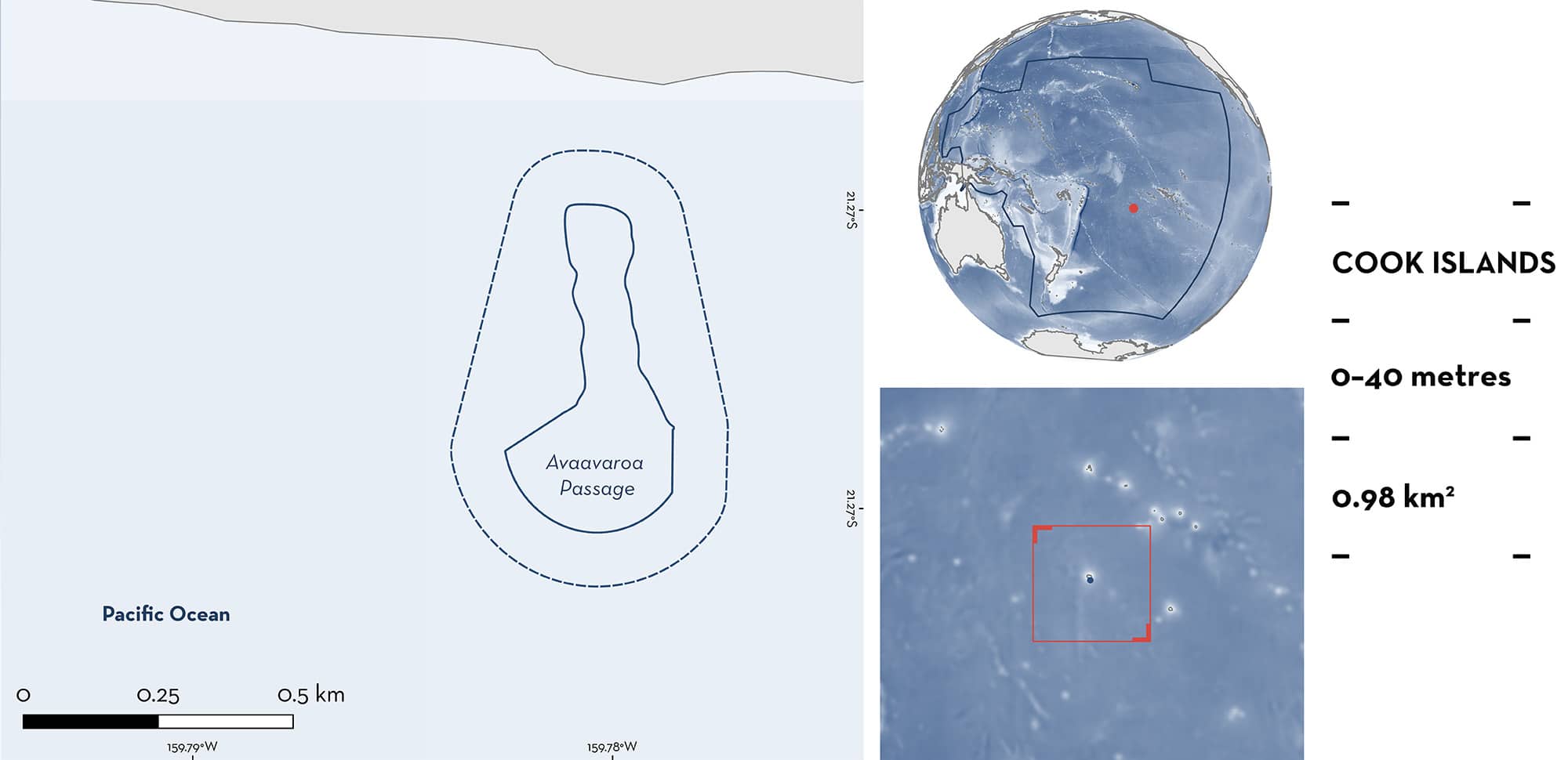ISRA FACTSHEETS
ISRA FACTSHEETS
NEW ZEALAND & PACIFIC ISLANDS REGION
Avaavaroa Passage
Summary
Avaavaroa Passage is located ~300 m off the southern coast of Rarotonga – the largest island of the Cook Islands. The area connects the reef to the inner lagoon system. It is characterised by relatively steep canyons including various caves. This area is influenced by strong currents and swells, as well as cyclone and storm activity. Within this area there are: threatened species (e.g., Spotted Eagle Ray Aetobatus ocellatus); resting areas (Whitetip Reef Shark Triaenodon obesus); and undefined aggregations (Spotted Eagle Ray).
Download factsheet
Avaavaroa Passage
DESCRIPTION OF HABITAT
Avaavaroa Passage is located ~300 m off the southern coast of Rarotonga – the largest island of the Cook Islands. This passage connects the reef area to the inner lagoon system. It is characterised by relatively steep canyons including various caves. This area is influenced by strong currents with significant wave heights and swells from the south (SSI 2024). The area is also influenced by cyclones, tropical storms, and trade winds (WACOP 2024).
This Important Shark and Ray Area is benthic and pelagic and is delineated from inshore and surface waters (0 m) to 40 m based on the bathymetry of the area.
CRITERION A
VULNERABILITY
Two Qualifying Species considered threatened with extinction according to the IUCN Red List of Threatened Species regularly occur in the area. These are the Endangered Spotted Eagle Ray (Finucci et al. 2024) and the Vulnerable Whitetip Reef Shark (Simpfendorfer et al. 2020).
CRITERION C
SUB-CRITERION C3 – RESTING AREAS
Avaavaroa Passage is an important resting area for one shark species.
Whitetip Reef Sharks regularly and predictably rest inside a cave within the passage. Resting individuals are usually solitary but have been observed in groups of up to three individuals. During recreational dives undertaken daily between 2022–2024, they were predictably observed resting during daylight hours up to twice per month (~48 times) (M Robinson unpubl. data. 2024; GoLocal Cook Islands unpubl. data 2024).
CRITERION C
SUB-CRITERION C5 – UNDEFINED AGGREGATIONS
Avaavaroa Passage is an important area for undefined aggregations of one ray species.
Spotted Eagle Rays are present year-round in this area. Recreational dives are undertaken daily and aggregations of Spotted Eagle Rays are routinely observed on almost every dive. They are usually observed in groups of 40–80 individuals (M Robinson unpubl. data 2024; GoLocal Cook Islands unpubl. data 2024), however, recreational dive surveys from August 2024 recorded an aggregation of >87 individuals. Recreational divers have recorded these aggregations for >35 years, with dives being undertaken numerous times a week (M Robinson unpubl. data 2024; GoLocal Cook Islands unpubl. data 2024). For example, ~35 individuals were reported aggregating in early July 2024 with up to 32 individuals together at 12 m depth (M Robinson unpubl. data 2024; GoLocal Cook Islands unpubl. data 2024), and 16 individuals aggregating at 24 metres in January 2020. Further information is required to determine the nature and function of these aggregations.
Download factsheet
SUBMIT A REQUEST
ISRA SPATIAL LAYER REQUEST
To make a request to download the ISRA Layer in either a GIS compatible Shapefile (.shp) or Google Earth compatible Keyhole Markup Language Zipped file (.kmz) please complete the following form. We will review your request and send the download details to you. We will endeavor to send you the requested files as soon as we can. However, please note that this is not an automated process, and before requests are responded to, they undergo internal review and authorization. As such, requests normally take 5–10 working days to process.
Should you have questions about the data or process, please do not hesitate to contact us.


